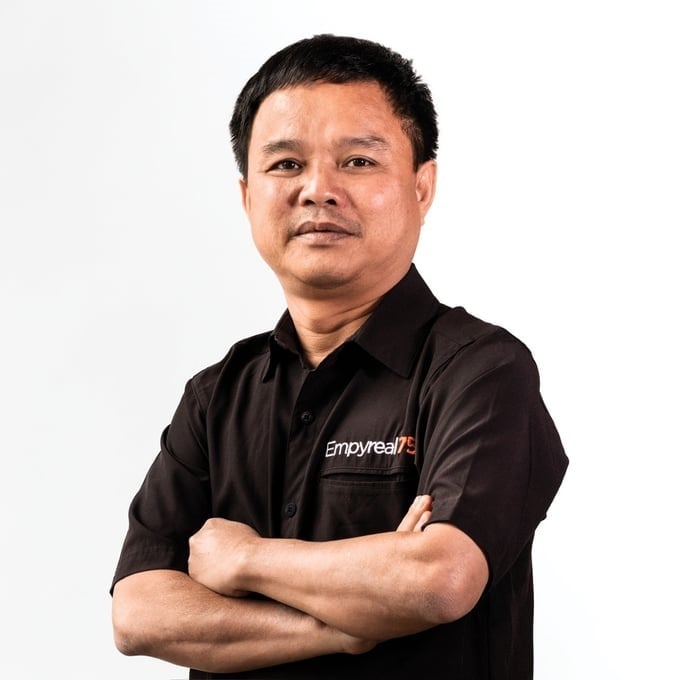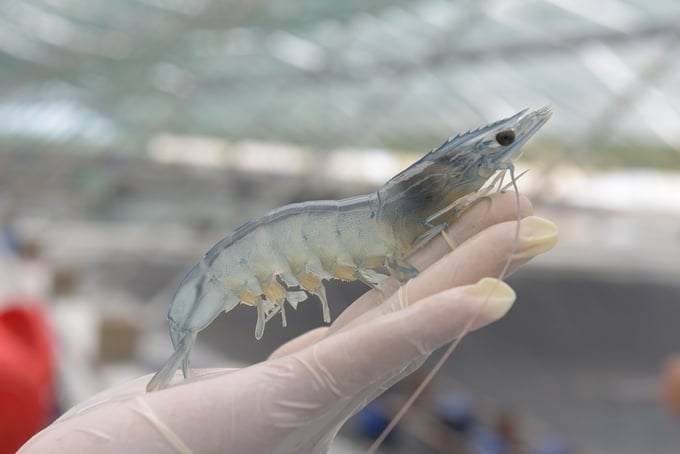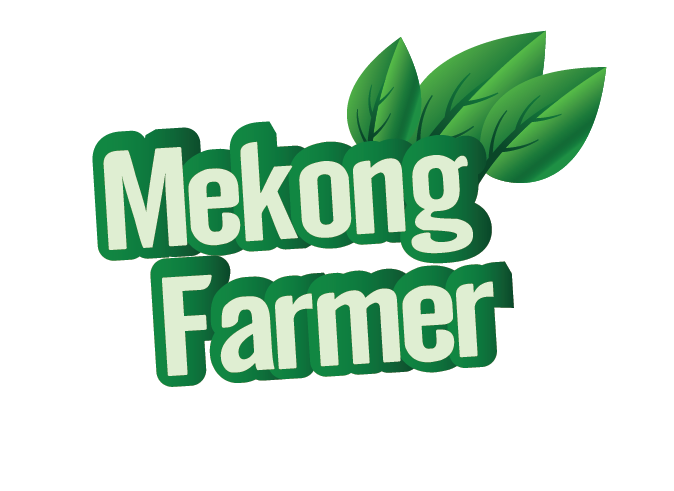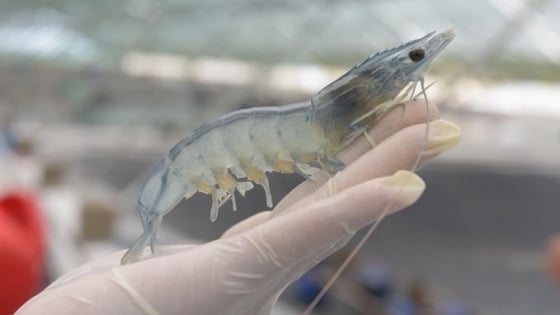(VAN) Why is Vietnam’s success rate in shrimp farming (40%) much lower than India’s (60%) and Ecuador’s (80%)? What must Vietnam do to gradually improve this rate?
5 basic causes leading to a low success rate
Dr. Nguyen Duy Hoa, Global Technical Director of Empyreal & Motiv Cargill Inc., said that there are 5 basic reasons leading to the low success rate in whiteleg shrimp farming in Vietnam.
First, Vietnam’s current shrimp stocking density is many times higher than that of India and Ecuador. Vietnam stocks 150–500 heads/m2, while India stocks 30–60 heads/m2, and Ecuador stocks 10–30 heads/m2.
The higher the farming density, the more susceptible the shrimp are to stress and to being attacked by pathogens, so only good farming households with the right investment can succeed in high-density shrimp farming in canvas ponds. However, the number of farms with good techniques and proper investment in the canvas pond model accounts for a small proportion of intensive canvas pond farming in Vietnam.

Dr. Nguyen Duy Hoa, Global Technical Director of Empyreal & Motiv Cargill Inc. Photo: TL.
Second, shrimp seeds are resistant to white spot disease. In Ecuador 20 years ago, hatchery owners selected surviving shrimp from ponds affected by white spot syndrome (WSS) virus disease to raise them as parent shrimp, then brought their baby shrimp to the farmers. Over the years, this mass practice in many hatcheries has unintentionally exposed many generations of shrimp on a commercial scale to WSS pathogens. Thanks to that, up to now, Ecuador’s domestic shrimp seeds have good resistance to white spot disease, so farmers benefit when farming in earthen ponds because they do not suffer major failures due to white spot disease like in Vietnam.
Third, the environment is polluted. The Mekong Delta is a downstream, low-tide region with many years of intensive agricultural cultivation and an irrigation system that is not well planned or dredged, so organic waste accumulated from agriculture, industry, and daily life causes serious pollution. Thereby, many dangerous pathogens are created that cause acute hepatopancreatic necrosis disease (AHPND), white feces disease (WFS), enterocytozoon hepatopenaei disease (EHP), etc.
Therefore, earthen pond farming not only faces the risk of white spot disease but also faces the risks of many of these dangerous diseases (AHPND, WFS, EHP, etc.), leading to a very low success rate of earthen pond farming in Vietnam (less than 30%).
Fourth is the level of farmers. In fact, in Vietnam, there are still a number of farming households that always achieve a high success rate (more than 80%). However, this number of farming households with good techniques, good financial resources, and proper and sufficient investment only accounts for a very small proportion.
The vast majority of shrimp farmers in Vietnam are still small farmers; their farming techniques are not good. Especially because farmers raise shrimp using credit from agents, they are easily led to use medicines, supplements, and chemicals from agents without farms, leading to a low success rate if the agents’ shrimp farming consultancy focuses on selling their products.
Fifth, feed and feeding programs are still inadequate. High intensive farming density in Vietnam requires the production of high-quality feed and good functional feed for the early stages, especially the stage of the first 45 days when the farming density is very high, so shrimp are most susceptible to disease. Meanwhile, on the market today, functional feed brands have different qualities and still do not meet the best effectiveness in enhancing stress resistance and disease prevention for shrimp.
It is necessary to focus on some solutions
According to Dr. Nguyen Duy Hoa, to improve the success rate of whiteleg shrimp farming in Vietnam, it is necessary to focus on solutions to the above-mentioned issues.
The first is about stocking density. We cannot do the same as Ecuador because the farm area in Vietnam is actually too small (average 1–3 hectares), while the farm area in Ecuador is at least a few dozen to a few hundred hectares, even thousands of hectares. So they completely release 10–30 heads/m2 and still have good output.
Specifically, the nursery phase should maintain a density of 1,000–2,000 shrimp seeds/m2. After the nursery period, 250–300 heads/m2 should be released. When shrimp reach 8 g/head, farmers should reduce the maximum farming density for canvas ponds to 120 heads/m2 or spread out to earthen ponds lined with net bottoms to raise 50–60 heads/m2 for large shrimp farming (20–30 heads/kg).
Doing this well will help increase the success rate and reduce the cost of shrimp production by shortening the farming time to reduce many other production costs while forcing farmers to invest in feed costs because of the high density.
Vietnam’s shrimp farms are too small, so they still have to stock at high densities to get output. However, it should be done more correctly for the growing phases.

Dr. Nguyen Duy Hoa, Global Technical Director of Empyreal & Motiv Cargill Inc., said: “Vietnam’s shrimp farms are too small, so they still have to stock at high densities to get output. However, it should be done more correctly for the farming phases.” Photo: Hong Tham.
The second is about shrimp seeds. Priority should be given to importing selected parent shrimp that both meet good growth standards and are resistant to diseases. Hatcheries pioneering in domestication and domestic breeding should approach Ecuador’s way by selecting large, healthy, and surviving shrimp from disease-infected ponds to raise as mass parent shrimp. This may take many years, but it will create a breakthrough for many years afterward.
In terms of State management, it is necessary to strictly inspect, punish, and strictly prohibit the clandestine use of antibiotics in hatcheries to prevent the supply of slow-growing shrimp herds that are easily infected with diseases due to the use of many antibiotics on the market. Shrimp seed production programs using probiotics and high-quality feed sources, including fresh algae, should be encouraged and supported.
The third is to solve the problem of the irrigation system. More than anyone else, the governments of shrimp farming provinces and cities need to prioritize good planning of water supply and drainage canal systems, as well as invest in regular dredging to clear good water and wastewater flows for farming areas to reduce organic pollution in water sources.
The fourth is connection and technical training. Funding for agricultural and fishery extension needs to focus on more practical issues instead of just organizing conferences and seminars. It is necessary to organize high-paying connections to hire technicians from good farms and experts good at shrimp farming practices to share and guide farmers around their areas.
The fifth is about feed and feeding programs. Feed factories need to orient the production of high-quality feed and functional feed lines for the nursery stage and up to 45 days of farming. Particularly, focusing on elements that increase resistance to stress and intestinal health for shrimp to prevent diseases, especially Vibrio sp. bacterial diseases. After a period of 45 days, it is possible to make a standard feed line with low protein that is cheaper while ensuring enough nutrition to maintain good average daily growth (ADG) and reduce the feed conversion ratio (FCR).
The raw material sources of high-quality protein and health nutrition, along with health additives and vitamins, need to be carefully selected when producing high-quality and functional feed for the first 45 days of farming.
Agriculture News | Agri Products Price



